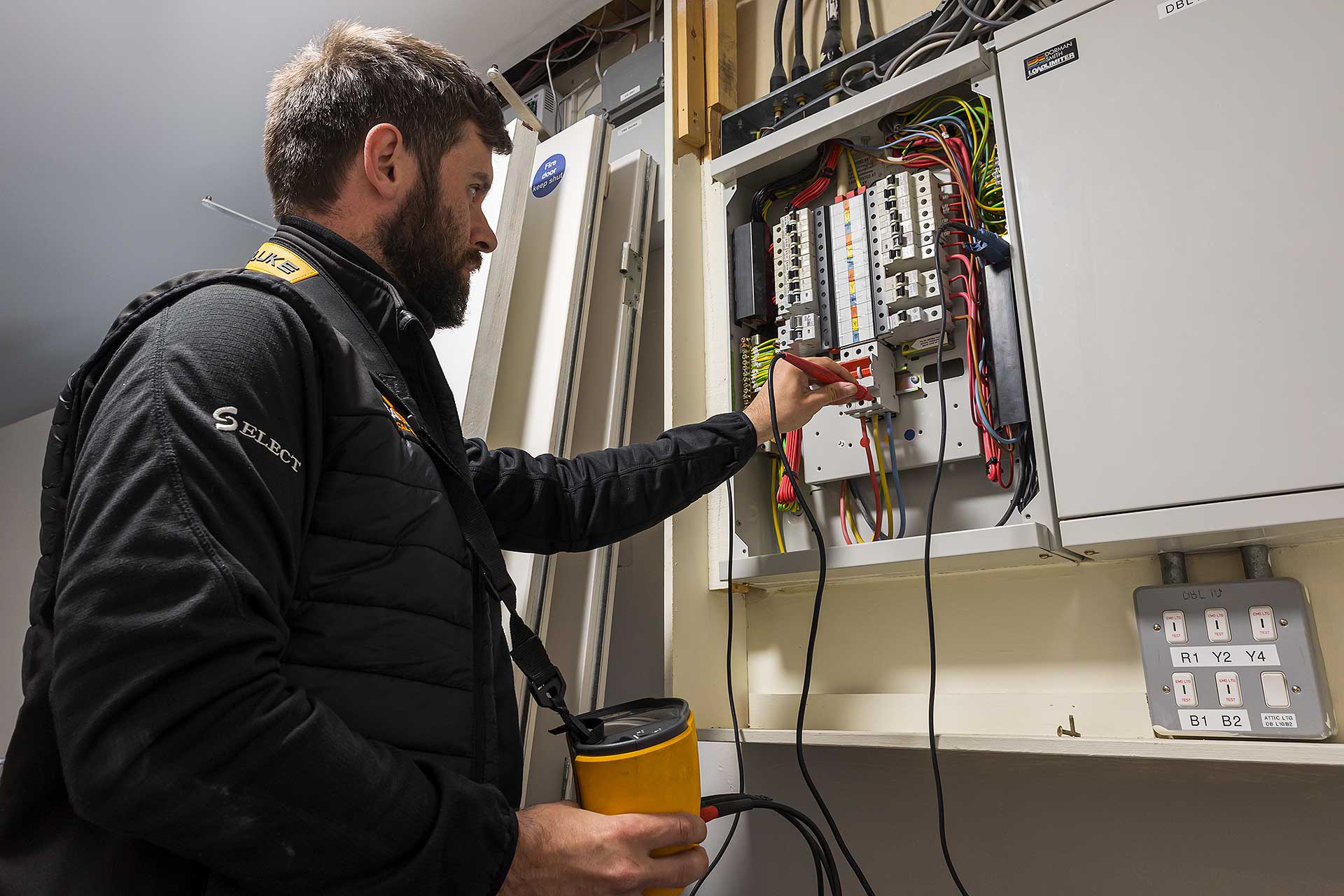Smoke Alarm Installation
The Scottish government has changed the law as of February 2022 - are you compliant?



Electrical Installation Condition Report's are a legal requirement for rented properties. We can help our domestic and commercial clients stay compliant by carrying out the necessary safety checks well in advance of any certificates that are due to expire.
Have a look below to see if you require an Electrical Installation Condition Report
What is PAT testing? PAT testing, PAT or Portable Appliance Testing is a part of the larger aspect of electrical inspection and testing, for checking electrical appliances are safe for continued use; similar to how a periodic inspection checks the electrical mains wiring. We can also help with your mains wiring inspections. For ease of understanding as the term ‘portable’ causes a lot of confusion – if you can’t easily move an appliance it doesn’t mean it doesn’t need testing. Portable means to unplug from the mains via a socket. More on this later.
The process involves a competent person (usually referred to as a PAT tester or PAT engineer) visually inspecting the plug, flexible cable and appliance to ensure they are in good, safe condition. This would usually involve opening the plug if it is the type that can be opened, to check the terminal screws and wiring inside, and to make sure the fuse is correct. If the plug is sealed, the fuse holder will be removed to check the fuse. The engineer will also check the plug pins to make sure they are correct. It is during this inspection that a lot of counterfeit electrical products are found. The engineer will also check the cable is correct and not damaged in any way, throughout its full length, and check the connection with the appliance.
They will also check the appliance to make sure it is secure, has appropriate guards and is being used appropriately. If any repairs are required they will be carried out. If you use us, for standard equipment operating up to 230v (not including 110v equipment) and 13amps, we will repair automatically and supply replacement plugs and fuses for free – some companies charge for them. When the engineer is satisfied that the appliance is visually safe he will then connect the appliance to a PAT testing machine, and carry out a sequence of tests appropriate to the appliance makeup. This can include verifying that the earth continuity and the insulation makeup between current carrying parts and any exposed metal that could be touched, is sound; and for earthed leads, a polarity test is usually carried out.
If an appliance fails any part of the inspection and or test, and can’t be repaired by the engineer, the appliance will fail the test. The engineer will then guide you on what action to take next. On completion of the tests, if the appliance passes, it will be labelled appropriately with a PASS label, like in the image above. Each label carries an ID number which is recorded and logged, so that when you get your PAT report it itemises the results directly to the appliance, using the ID number.
Back at our office we use the results to create the PAT Test Certificate Report that we issue to you as soon as possible. PAT testing is widely regarded as the number one solution for ensuring electrical equipment is maintaining safe standards for continued use; which is a requirement of the Electricity at Work Regulations. Which means you getting your equipment PAT tested is the number one solution for you as it helps you comply with the regulations. How often you get PAT testing done depends on your own risk assessment, the recommendations of the HSE and the guidance of your PAT engineer, as a competent person following the IET’s Code of Practice guidance.
The Scottish government has changed the law as of February 2022 - are you compliant?
